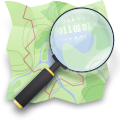History
Organic Maps was founded as a fork of Maps.me app in December 2020.
The app Maps.me was initially launched in 2011 as MapsWithMe, later renamed Maps.me and open-sourced in 2015. On 20 December 2020, the then-owner of Maps.me app released a new version that was not based on the code published on GitHub, which resulted in backlash from the community. One of the users published a call to fork Maps.me and rebuild the community around it, [17] and on 27 December a hackathon was organised to bootstrap the new project based on a previous fork that was used to publish the app on F-Droid. [18] [19] Two of the Maps.me app authors, Alexander Borsuk and Viktar Havaka, started their own fork on 20 December 2020, [20] registered organicmaps.app domain on the next day [21] and joined efforts with the community fork in January 2021. The project adopted guidelines and development policies and early documentation stated goals related to privacy, performance, and community governance. The first public release of Organic Maps was made available in the app stores in June 2021. [22]
In April 2025, members of the Organic Maps community raised concerns regarding project governance and transparency. These issues were outlined in an open letter addressed to the project's shareholders. [23] The lack of a satisfactory resolution between the shareholders and the community contributors led a group of contributors to establish a separate, independent project known as CoMaps. [24]
In August 2025 the developers changed the license for their map data binaries, allowing use in other applications only with prominent attribution to the OpenStreetMap and Organic Maps projects. [25]
This page is based on this
Wikipedia article Text is available under the
CC BY-SA 4.0 license; additional terms may apply.
Images, videos and audio are available under their respective licenses.


